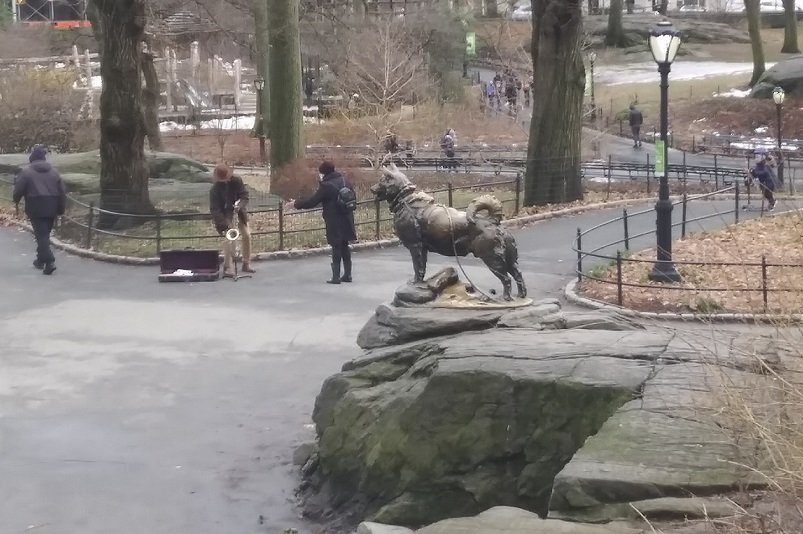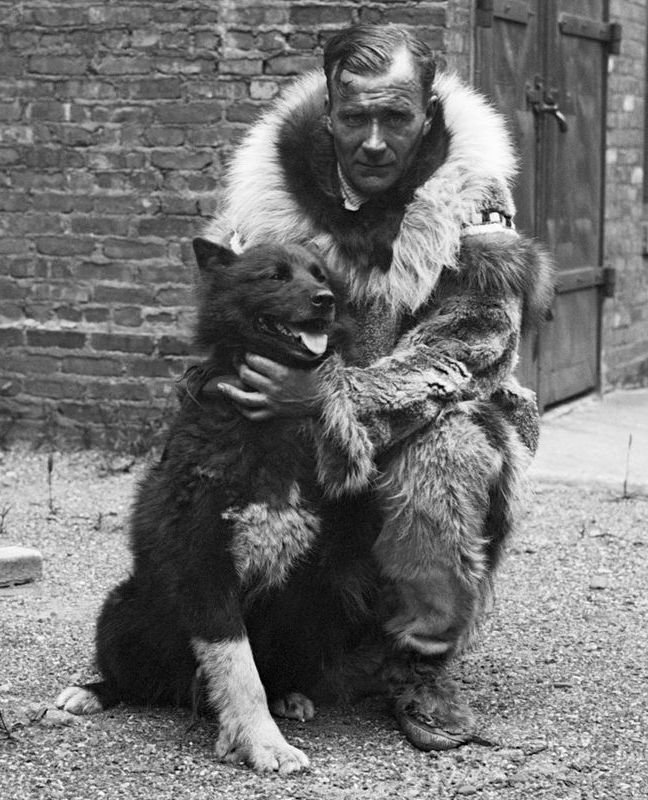When Universal Studios first released their film Balto around Christmas of 1995, they weren’t just telling a nice story. The film is based on a true story, and one about just how remarkable the bond between humans and dogs really is. Back in 1925, a dog named Balto and his handler were responsible for delivering life saving medicine to a village in Alaska during a particularly brutal arctic winter.
The Origin Of Balto
Balto was an all-black Siberian Husky born in Nome, Alaska back in 1923. He was bred by the owner of the famous sled dog Togo, Leonhard Seppala, and he was originally considered to be unfit to live the life of a true Alaskan sled dog. Balto was said to have a barrel chest and a stocky build, which was far removed from the slender and athletic build one would look for in a pup to join a sled team. Because of this, Balto was sent to do freighting, which involved hauling sleds of cargo to and from where they needed to be.
Balto proved himself to be a talented cargo freighting dog, but that wasn’t where his talents ended.

Diphtheria Outbreak Of 1925
In 1925 the town of Nome, Alaska was experiencing a diphtheria outbreak. While most commonly found in children, diphtheria can affect individuals of any age. The disease is caused by the bacteria Corynebacterium diphtheriae and may be spread from person to person inside of respiratory droplets or by touching open sores. The bacteria creates a toxin that attacks the tissues of the respiratory system, as well as sometimes causing sores or infections of the skin.
To beat diphtheria, one would need an antitoxin serum, which was often difficult to come by in remote parts of Alaska during the 1920’s. As the disease can spread from person to person quickly, the residents of Nome were searching for a solution to get the antitoxin to the village where it was needed.
The nearest available doses of the diphtheria antitoxin were available all the way in Anchorage, Alaska, but they could be transported from Anchorage to Nenana. From Nenana to Nome was typically a month-long sled dog trip, which would be entirely too long to ward off the disease from taking over the entire town. This outbreak was taking place in January, a time of year when it was too dangerous for planes to fly, and often too icy for the railways that connected Nenana to Nome.
Forming A Plan
The antitoxin would have to get from Nenana to Nome as quickly as possible, so the area’s top sled dog drivers devised a plan to set up a relay in order to get the medicine to Nome. More than 20 citizens of Nome and their 100 sled dogs volunteered to take on the task during a harsh Alaskan winter. The route they chose was the 650-mile freight route known as the Iditarod.

One of the volunteers was none other than the man responsible for breeding Balto, Leonhard Seppala, who brought along with him his best team of imported Siberian huskies lead by his prized Togo. Balto’s owner, Gunnar Kaasen, was putting his faith in the 3-year-old freighting dog Balto, with the stocky build and a barrel chest, to lead his team.
The Journey From Nenana To Nome
The antitoxin arrived in Nenana on January 27th of 1925, and was on the same day whisked away on the way to Nome by the first sled dog team. Each leg of the relay ranged from 24 to 52 miles, depending on the terrain and what the weather conditions would allow. Leonhard Seppala and Togo’s team took on one of the longest and most perilous legs of the journey.
Gunnar Kaasen had the last leg of the relay, and were tasked with delivering the medicine on the final stretch to Nome. High winds at times lifted the sled dog team in the air, but Balto stayed the course and drove the cargo into town. The entire journey, which normally takes a month, took about 128 hours of travel to deliver the antitoxin, and it arrived in Nome in the early morning hours of February 2nd, 1925.

Despite his inexperience as a sled dog, his young age, and his equally inexperienced musher, Balto and his team made a perilous trip to save the town from being overtaken by the diphtheria outbreak. While this was not a one dog or one musher job, and each member of the volunteer party contributed to the incredible feat of delivery the antitoxin to Nome, Balto became the symbol of the effort and a symbol for hope in the face of adversity.
Balto After Nome
In December of 1925, sculptor Frederick Roth created a bronze statue of Balto with an inscription honoring the “indomitable spirit” of Balto and all of the sled dogs involved with the relay. Balto and his owner Gunnar Kaasen were present for the statue’s unveiling in New York City’s Central Park. In the immediate years following the relay, Balto and Kaasen were celebrities on the Vaudeville circuit and even had a two-reel film called Balto’s Race to Nome made about them by filmmaker Sol Lesser.
Balto and his fellow sled dogs retired in Cleveland, Ohio thanks to a fund created by businessman George Kimbel in 1927. This is where they rested for the rest of their years. Balto lived a full life and passed at the age of 14 in 1933. His remains were given to a taxidermist, where they remain on display at the Cleveland Museum of Natural History.
The Legacy Of The Relay
The famed relay that brought the antitoxin to Nome wasn’t just the inspiration for the 1995 animated film Balto. In 1973 was the start of the “Last Great Race on Earth”, or the Iditarod Trail Sled Dog Race inspired by the very route taken by the relay teams. During the 10 days of the race, the community of Nome celebrates Iditarod Week as a tribute to the time the town was saved.

